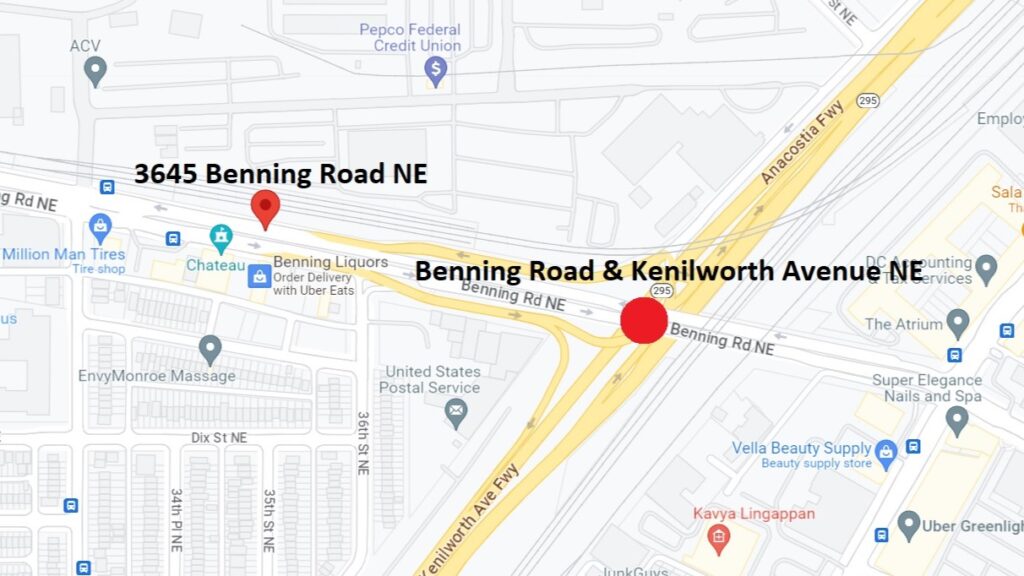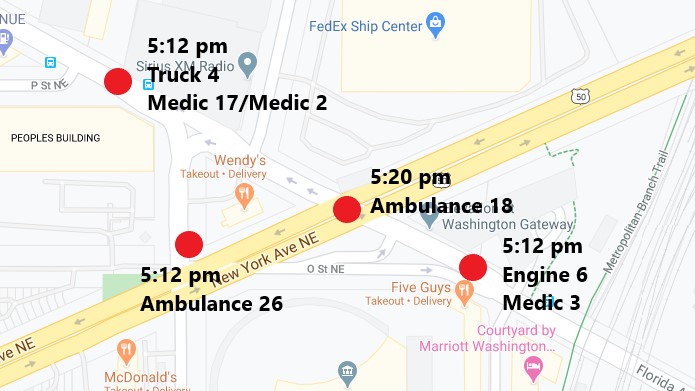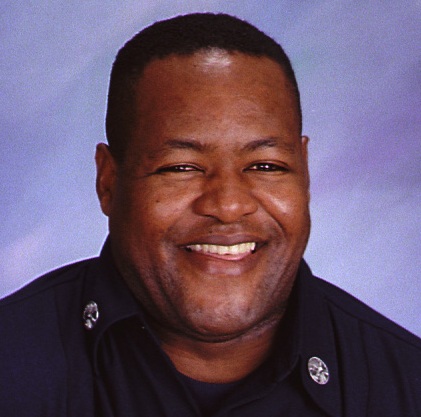DC 911 remains an embarrassment & dangerous
911 center in the nation's capital constantly wastes resources on obvious duplicate calls
Watch: As if we didn't have enough smoke. This is from a vehicle fire just handled by @dcfireems on I395N at the Case Bridge over the Washington Channel. @ARLnowDOTcom @PoPville @safetyvid #firefighters #traffic #dctraffic #vatraffic pic.twitter.com/Wf0BCRgaMZ
— Dave Statter (@STATter911) June 7, 2023
Looking for a quality used fire truck? Selling one? Visit our sponsor Command Fire Apparatus
Residents and visitors never know if someone will answer when they use their phones to call DC 911. Firefighters, paramedics and EMTs never know if someone will respond when they call in by radio. But there’s something you can count on from this crucial government agency. DC 911 will constantly waste valuable fire and EMS resources by sending duplicate and even triplicate responses to what are obviously the same call.
Yesterday (Wednesday) alone, it happened on at least three different calls in a little more than three hours. All three occurred on highways and major roads that every person working at DC’s Office of Unified Communications (OUC) should know.
On top of that, during one of those calls, DC 911 was supposed to immediately alert Arlington County for a mutual aid response. It took almost 12 minutes for that notification. It’s another constant problem. In fact, four hours later the same process on a different call took about eight minutes. Both should be unacceptable.
As for the duplicate responses, it happens multiple times each day despite dispatch software that’s supposed to prevent it from occurring. It’s a problem I wasn’t expecting to find when I began closely monitoring DC Fire & EMS in late 2019. But the pattern quickly became apparent. Despite my many reports about the issue, it continues unabated. What happened yesterday is not at all unusual. It illustrates a lack of knowledge about area roads and a consistent failure by DC 911’s supervisors.
As the headline says, it’s an embarrassment. It’s also dangerous, diverting valuable resources that could be needed for a real emergency.
The vehicle fire
I’ll admit from the start that a pick-up burning, sending smoke high in the sky above an elevated major highway, adjacent to the monuments and federal offices in the nation’s capital, is a rush hour attention grabber. I’m sure it generated a ton of 911 calls. And most of those people likely didn’t know where the fire was actually located. A lot of sympathy for DC 911’s call-takers during moments like this. Still, it should have been immediately obvious to dispatchers and supervisors that at least three of the calls dispatched were for the same thing.
First dispatch 7:08 p.m. – Two engines, a tower ladder and a battalion chief were sent for a motor vehicle collision on I-395N at the 12th Street exit. It’s interesting that no EMS units were dispatched on this crash assignment. That’s not normal. Did the dispatcher misspeak about it being a crash instead of a fire or was there a mistake in the assignment?
Second dispatch 7:10 p.m. – Two more engines, a ladder truck and another battalion chief were sent to a vehicle fire on I-395N at the 14th Street Bridge. As you can see on the map below, the 14th Street Bridge is just a few thousand feet before the 12th Street exit on I-395N.
Yes, it’s possible these were two different calls. But here’s the thing that really makes the need for this second dispatch questionable. It’s SOP for multiple units from the first dispatch to go into Virginia, turn around, and come back across the 14th Street Bridge on I-395N. OUC’s workers should know this. They should also know if procedures were properly followed an engine, ladder truck and ambulance from Arlington County should have immediately been requested. Those units would also come across the 14th Street Bridge into DC. In other words, the bases were covered on this one without the need for a second dispatch.

Third dispatch 7:15 p.m. – The address for this one was 12th Street and Maine Avenue SW. The intersection is located immediately below I-395 and the 12th Street ramp. An engine and ambulance were dispatched for a crash.
At 7:21 p.m., a dispatcher alerted the two battalion chiefs that the Arlington County Fire Department was finally notified about this mutual aid call. The reason Arlington is sent on these calls is its units can reach most locations on I-395N faster and easier than DC Fire & EMS. But when 12 minutes are lost before dispatching them it defeats the purpose. Still, ACFD dutifully responded with an engine, ladder truck and medic unit.
It’s not hard to imagine someone being trapped in that burning pick-up. As the radio traffic shows, OUC did get that report and added a heavy duty rescue squad to the call — but still no dispatch of EMS unit. Thankfully that wasn’t the case. If someone was trapped, how outraged would we all be that DC 911 waited 12-minutes to dispatch fire and EMS units that could get there faster.
In the end, there was just one vehicle fire, but the response included six engines, two ladder trucks, a heavy duty rescue squad, two battalion chiefs, a medic unit and an ambulance. That’s one engine more than is sent on a building fire. The fire was handled by one DC Fire and EMS Department engine and one ladder truck. There was one casualty during this triple response. A DC engine on the second dispatch struck a guard rail in the express lanes of I-395N in Virginia.
Crash 1
While there might be people making arguments on behalf of DC 911 during the vehicle fire, I doubt there’s any excuse for this one. At 9:59 p.m., DC 911 sent Engine 33 to the intersection of South Capitol Street and Chesapeake Street for a collision. Sixty-seconds later, Engine 25 was dispatched to 2 Chesapeake Street SW for a crash. If you know and understand DC’s street layout you also know instantly the cross street closest to 2 Chesapeake Street SW is South Capitol Street. If you don’t know this without looking at a map you shouldn’t be working at DC 911.

Google maps shows the two points are just 170 feet apart. Somehow a call-taker, a supervisor and at least two dispatchers never saw what was obvious — these two were the same call. As is the case approximately 90 percent of the time (my educated guess on the stat) it was up to DC Fire & EMS to correct this mistake. The officer of Engine 25 saw on the mobile display what DC 911 missed — these two calls were at the same location. But he went further and did something DC 911 isn’t known for. He read the dispatch notes and saw the vehicle descriptions on both calls were also the same. Engine 25 notified OUC they were canceling themselves on the call.
Crash 2
About 30 minutes after the South Capitol and Chesapeake call there was a crash at Benning Road and Kenilworth Avenue NE. Engine 8 and Ambulance 8 were dispatched at 10:32 p.m. At 10:40 p.m., Engine 27 was sent to 3645 Benning Road NE for a crash. The two locations are just 1000 feet apart. The officer from Engine 27 read the dispatch notes on his call and called the officer of Engine 8 via radio. Once again, same vehicle, same crash, same mistake. All followed by the same inaction by DC 911.

When will someone address this?
You can pick any day of the week and find multiple examples of calls that are obvious duplicates getting by call-takers, dispatchers and supervisors. In August of 2020 I documented one EMS call where there were four separate dispatches within 1000 feet of each other at Florida Avenue and New York Avenue NE. Three of the calls were dispatched back-to-back within just 60 seconds.

If it wasn’t for the diligence of the firefighters, paramedics and EMTs, the wasting of valuable resources would be much worse. In other words, DC Fire & EMS saves DC OUC’s butt daily. Actually, it’s often hourly. These problems never get solved. Instead, fire and EMS creates work-arounds to deal with 911’s worsening problems.
The most significant factor at DC 911 causing the duplicate dispatches is one that has plagued OUC since its inception almost 19 years ago. Too many workers aren’t well trained in the city’s geography. They are left unable to catch these problems — even with software that helps alert them that to the duplicates.
DC 911 is also hampered by the failure of many of its workers to read dispatch notes and updates. Last year, I brought this issue up with a top official at OUC. It had become painfully obvious just from listening to radio traffic that dispatchers not checking the updates led to many errors. The response to my comment was completely defensive with claims that it’s the job of the people in the field to read the notes and updates. I later discovered that at one point these signs (below) were posted around DC 911. Not sure if they’re still there.

The supervisors should be the last line of defense to prevent these errors. There’s a long list of recent mistakes where you have to ask what the supervisors were doing when they occurred.
The issue of duplicate responses is just one of many systemic problems at DC 911/OUC. Taken together, they paint a picture of a 911 center in crisis. Where I see embarrassment and danger, the administration of Mayor Muriel Bowser continues to see something completely different. Despite multiple scathing audit reports and the DC Council late last year forcing a withdrawal of Bowser’s first choice to lead the agency, there’s still no acknowledgement from on high that DC 911 is a troubled agency.







